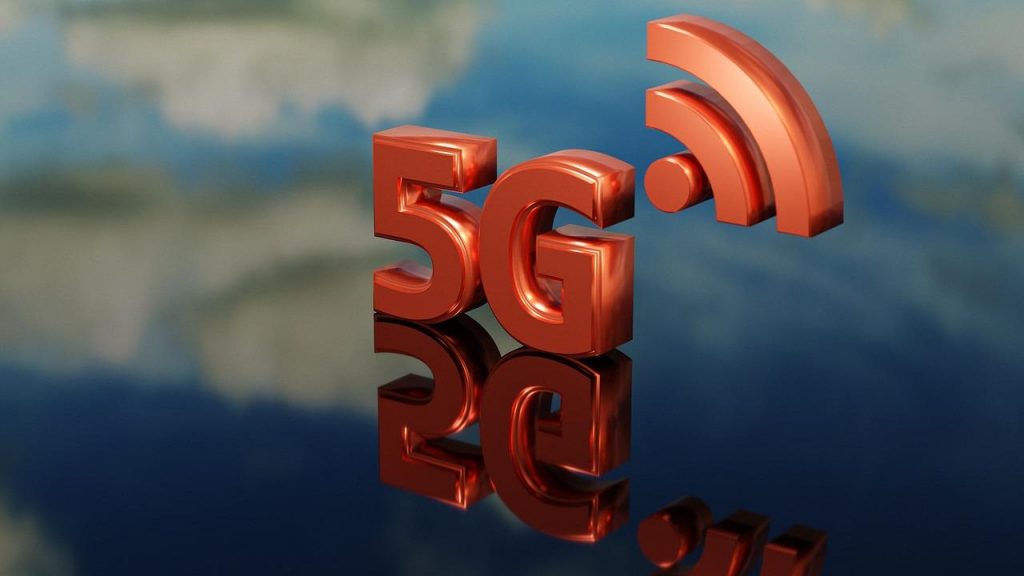What is 5G?
5G, or fifth-generation wireless technology, is the latest and most advanced iteration of cellular network infrastructure. Compared to its predecessors, 5G offers several key improvements:
|
Feature |
3G |
4G |
5G |
|---|---|---|---|
|
Maximum Download Speed |
2 Mbps |
1 Gbps |
10 Gbps |
|
Latency |
100-500 ms |
30-50 ms |
1-10 ms |
|
Capacity |
2 Mbps/km^2 |
0.1 Gbps/km^2 |
10 Gbps/km^2 |
Key Features of 5G
The main features that set 5G apart from previous generations include:
- Higher Speeds: 5G can deliver download speeds up to 10 Gbps, significantly faster than 4G’s 1 Gbps.
- Lower Latency: 5G has a latency of 1-10 milliseconds, much lower than the 30-50 milliseconds of 4G.
- Greater Capacity: 5G networks can handle up to 10 Gbps per square kilometer, compared to 0.1 Gbps for 4G.
- Improved Efficiency: 5G technology is designed to be more energy-efficient and spectrum-efficient than 4G.
- Enhanced Connectivity: 5G supports the simultaneous connection of more devices per square kilometer, enabling the growth of the Internet of Things (IoT).
Benefits of 5G for Home Networks
Enhanced Internet Speeds
One of the most significant benefits of 5G for home networks is the dramatic increase in internet speeds. With 5G, users can expect download speeds up to 10 Gbps, which is significantly faster than the typical 4G speeds of around 50 Mbps.
|
Network |
Average Download Speed |
|---|---|
|
3G |
4-7 Mbps |
|
4G |
15-50 Mbps |
|
5G |
100-1000 Mbps |
Improved Connectivity
5G technology also offers improved connectivity for home networks, allowing for the seamless operation of multiple devices simultaneously. This is particularly beneficial for households with numerous connected devices, such as smart TVs, gaming consoles, security cameras, and various IoT gadgets.
Some of the key benefits of 5G’s improved connectivity include:
- Reduced network congestion
- Faster data transmission speeds
- Reliable performance for bandwidth-intensive applications
- Support for a greater number of connected devices
Preparing Your Home Network for 5G
Assessing Your Current Network
Before upgrading to 5G, it’s essential to evaluate your current home network setup. Consider the following factors:
- Network Speed: Assess the current download and upload speeds of your internet connection.
- Device Compatibility: Determine which of your existing devices are compatible with 5G technology.
- Network Coverage: Evaluate the coverage and signal strength in your home to identify potential problem areas.
- Network Security: Review the security measures in place, such as your router’s firewall and encryption settings.
Upgrading Your Equipment
To fully take advantage of 5G technology, you’ll need to upgrade your home network equipment. This may include:
|
Device |
5G-Compatible Models |
|---|---|
|
Router |
ASUS RT-AX86U, Netgear Nighthawk RAX120, TP-Link Archer AX6000 |
|
Modem |
Arris SB8200, Netgear CM1200, Motorola MB8600 |
|
Devices |
Samsung Galaxy S21 5G, Apple iPhone 12 5G, Google Pixel 5 5G |
Ensure that all your network devices, including routers, modems, and client devices, are compatible with the 5G standard to maximize the benefits of the new technology.
Choosing the Right 5G Service Provider

Coverage and Availability
When selecting a 5G service provider for your home network, it’s crucial to consider the coverage and availability of the 5G network in your area. Check with multiple providers to determine which one offers the best 5G coverage and reliability in your location.
Pricing and Plans
5G service providers offer a variety of pricing plans and packages to accommodate different needs and budgets. Compare the following factors when evaluating 5G plans:
|
Provider |
Download Speed |
Upload Speed |
Monthly Cost |
|---|---|---|---|
|
Verizon 5G Home |
300-1000 Mbps |
50-200 Mbps |
$50-$70 |
|
AT&T 5G Home |
100-1000 Mbps |
20-100 Mbps |
$35-$60 |
|
T-Mobile 5G Home |
50-400 Mbps |
10-50 Mbps |
$50-$60 |
Consider your household’s internet usage patterns and bandwidth requirements to select the most suitable 5G plan for your home network.
Maximizing the Benefits of 5G at Home
Optimizing Network Settings
To ensure optimal performance from your 5G home network, consider the following settings:
|
Setting |
Recommended Value |
|---|---|
|
Wireless Channel |
36, 40, 44, or 48 |
|
Channel Width |
80 MHz or 160 MHz |
|
Transmit Power |
High |
|
Beamforming |
Enabled |
Adjust these settings based on your specific network environment and equipment to maximize the benefits of 5G technology.
Enhancing Security
Securing your 5G home network is crucial to protect your devices and data. Implement the following security measures:
- Enable WPA3 encryption
- Use a strong and unique network password
- Configure your router’s firewall settings
- Keep your network firmware and software up to date
- Consider using a VPN for additional protection
Potential Challenges and Solutions

Signal Interference
One potential challenge with 5G is signal interference from physical obstacles, such as walls, trees, and buildings. To mitigate this issue, you can:
- Strategically position your 5G router for optimal coverage
- Use a 5G-enabled extender or mesh network to improve coverage
- Ensure there are no obstructions between your devices and the 5G router
Compatibility Issues
Some older devices may not be compatible with 5G networks. To address this, you can:
- Upgrade to 5G-compatible devices, such as smartphones, tablets, and laptops
- Use a 5G-to-Ethernet adapter for devices without built-in 5G support
- Consult with your service provider to ensure your equipment is compatible
Future Trends in 5G Technology
Emerging Applications
As 5G technology continues to evolve, we can expect to see a wide range of new applications and services that leverage its capabilities:
- Enhanced virtual and augmented reality experiences
- Improved remote healthcare and telemedicine
- Advancements in autonomous vehicles and smart transportation
- Expanded IoT ecosystem with more connected devices
Continuous Improvements
The 5G standard is expected to undergo continuous improvements and advancements in the coming years, including:
|
Improvement |
Timeline |
|---|---|
|
Increased maximum download speeds |
Up to 20 Gbps by 2025 |
|
Reduced latency |
Less than 1 millisecond by 2027 |
|
Enhanced energy efficiency |
10x improvement by 2030 |
|
Expanded coverage and capacity |
100x capacity increase by 2030 |
As these advancements unfold, homeowners can look forward to an even more seamless and future-proof 5G home network experience.
Conclusion
The advent of 5G technology presents a transformative opportunity for home networks. By understanding the capabilities of 5G, evaluating your current network, and making the necessary upgrades, you can position your home to take full advantage of the speed, connectivity, and future-proof benefits that 5G has to offer. Embrace the future of 5G and ensure your home network is ready to keep pace with the ever-evolving digital landscape.

